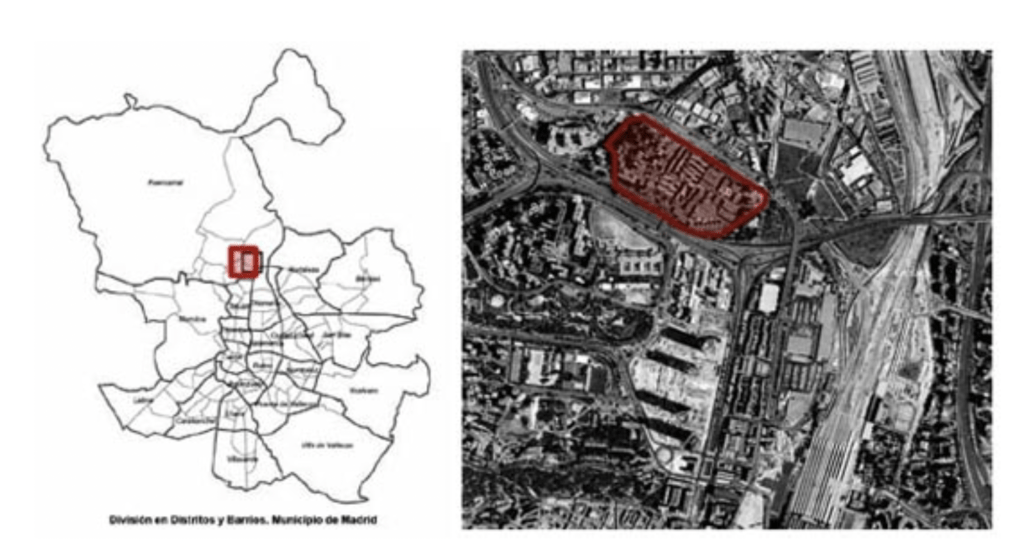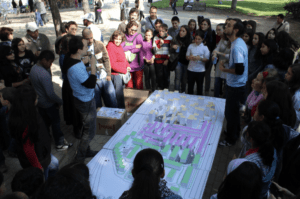This week I have been working with Paisaje Transversal on presenting a paper proposal to the “Public Play Space Symposium.” We’re looking at how gamification tactics and responsive digital technologies might help to encourage and enable Co-Creation and Co-Design processes in and for public spaces.
Paisaje Transversal considers citizen participation a critical tool for improving all the urban challenges that a city faces. Creating a participatory culture, while difficult to cultivate is a critical component in ensuring that cities suit the needs of both their citizens and visitors. Paisaje Transversal aims to do so through the gamification approach, where residents participate in a game in which they can analyze a neighborhood’s overall needs and provide regenerative urban solutions that are tailored to their local community aspirations. This also promotes the notion popularized that urban regeneration is a developing and continuous process.
What is the gamification approach?
The gamification approach integrates game aspects to real-world tasks which
function as a way for making these procedures enjoyable for the users, in this case, the citizens of an area or city. The goal of this innovation is to encourage participants to engage in more appealing and engaging participation activities, while also encouraging active and consistent behavior. Games have been shown to have a motivating impact on their users, boosting their degree of involvement as a result. Paisaje Transversal has been able to use the gamification approach in neighborhoods like Virgen de Begoña and the City of Olot. It functioned as a way for citizens’ involvement in their community regeneration projects.
Virgen de Begoña
Virgen de Begoña is a neighborhood in Madrid’s northwestern outskirts that is home to Paisaje Transversal’s first bottom-up urban redevelopment project. The area has a population of little over 8,000 people, with a sizable elderly population that is particularly susceptible. In 2011, with the help of the Begoña Neighbors Association, they were able to launch an integrated plan of action to address community concerns such as housing, building and public space degradation, and the need for improved economic opportunities.

Neighborhood of Virgen de Begoña (source: Paisaje Transversal)
During the past six years, the regeneration process in Virgen de Begoña has been propelled by activism from within the community. Every year Paisaje Transversal participates in an event called Fiestacción, a yearly celebration of local culture and civic involvement. Their goal was to bring the attention of the City Council and the Fuencarral-El Pardo District Board to the neighborhood’s condition of urban, environmental, and social degeneration, and to encourage the administration to take action to help Virgen de Begoña regenerate. At Fiestacción, they have implemented a number of projects, which have taken the form of inclusive games with instructional components. They held a large game of Trivial Pursuit early on in our partnership, which also served as an introduction to local geography, history, and neighborhood dynamics.

Trivial VdB at Fiestacción (source: Paisaje Transversal)
Based on collective quantitative diagnostics and community feedback they presented a strategy to make Virgen de Begoña more accessible to everyone. Their first project focused on pedestrian routes by removing physical obstacles like steps and stairways, reusing pavement and masonry, and rearranging parking and public areas. Making communities more walkable promotes public space interaction, social cohesiveness, and local business.
In the next couple of weeks, I will be conducting more research on various games that Paisaje Transversal has used in the past in other neighborhoods.
For more information about the Trivial Pursuit game click here
